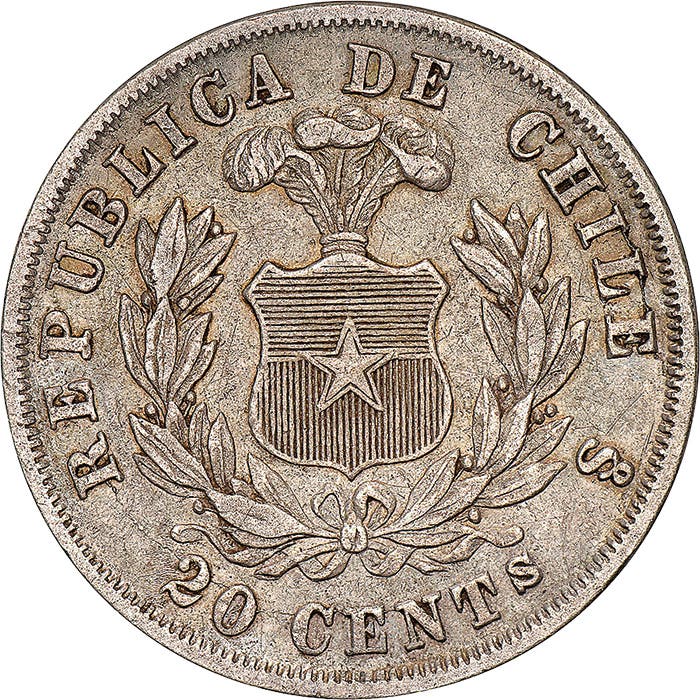First Ever NGC-slabbed Shipwreck Treasure to Be Sold at Auction
The first ever shipwreck treasure bar encapsulated by NGC will cross the auction block in Daniel Frank Sedwick, LLC’s upcoming Treasure Auction 33. The unique Colombian gold “finger” bar was…
The first ever shipwreck treasure bar encapsulated by NGC will cross the auction block in Daniel Frank Sedwick, LLC’s upcoming Treasure Auction 33.
The unique Colombian gold “finger” bar was lost for over 330 years in the sinking of the Spanish treasure gallon Maravillas on Jan. 5, 1656, off Grand Bahama Island.
The bar will be sold as lot 60 during the first day of the auction firm’s May 3 and 4 sale, to be held online at auction.sedwickcoins.com. Its pre-sale estimate is $40,000 and up; bidding is already at $100,000.
“This is an incredible opportunity to own the first NGC-certified treasure bar,” said Daniel Frank Sedwick, president and founder of Daniel Frank Sedwick, LLC. “As we see many collectors developing new interests in the shipwreck treasure field, we’re looking for ways to highlight the historical significance and value of these rarities. Partnering with NGC to provide their certification for this impressive gold bar will make it an exclusive and attractive collectible for the top bidder.”
NGC encapsulated the 6-3/4”, 19-1/4 karat gold bar weighing over 336 grams in their largest plastic slab dubbed the “mega holder.” The NGC holder label attests to both the authenticity of the bar and its provenance to the Maravillas. The slab’s inner gasket was trimmed to securely fit the gold bar and allow for full viewing of its markings.
The gold bar was cast and stamped in Zaragoza, an important gold-producing region in Colombia, as indicated on the bar by the complete foundry and assayer cartouche with RIBERA / ZARAGOZA inside. The top of the bar shows three clear fineness markings consisting of XIX inside a box next to a dot (the symbol for a quarter karat) inside a separate box; the fineness was also lightly incised into the surface prior to stamping. There are partial imprints of four circular tax stamps showing different parts of a typical Philip IV legend (as on the coins). Several patches of white coral encrustation across its surfaces corroborate its shipwreck pedigree.
In early 1655, this bar was loaded aboard the Nuestra Señora de las Maravillas in Cartagena, Colombia. Spain relied on a constant stream of New World gold and silver along with jewelry, precious stones, and pearls to fund the kingdom’s expenses. The Maravillas itself carried over 5 million pesos in treasure meant for mainland Spain, including salvaged coins from the wreck of the Jesús María de la Limpia Concepción, sunk in 1654 after striking a reef off Chanduy, Ecuador.
After the departure of the Maravillas from Cartagena in July, English naval raids in the northern Caribbean prevented the Spanish ship from reaching its next port, Havana, until October. On January 1st, 1656, after repairs and restocking of the ships’ stores were completed, the Spanish treasure fleet left Havana for Spain. The Maravillas, as the almiranta of the fleet, led the way.
At midnight on January 4th, the Maravillas accidentally entered shallow water off Grand Bahama Island. The crew drastically reduced her speed and attempted to signal the fleet to halt by using cannon fire. Several ships misjudged the signals and continued forward. One of those ships struck the Maravillas near her bow, fatally damaging the galleon.
The Maravillas’ captain attempted to ground her on a nearby reef. However, the ship took on water too quickly and partially sank in deeper water. Strong winds and waves began to tear the ship apart as her crew clung to any masts and rigging still above water. Of the 650 sailors aboard, just 45 survived the night and were rescued by another galleon in the fleet which had anchored nearby. For a time, the Maravillas and her treasure were a complete loss.
In mid-1656, Spanish divers led by Capitan Juan de Somovilla Texada located the site of the scattered Maravillas wreck. Picking amongst the debris yielded a small fraction of the whole treasure. Subsequent salvage work over the next three years resulted in a modest recovery of about a quarter of her riches. The wreck site was then covered by sand and lost for over 300 years.
In 1972, Robert F. Marx and his salvage company, Seafinders Inc., located the Maravillas. After identifying the wreck and obtaining a lease form the Bahamian government, they began salvaging coins, artifacts, and ingots from the site. Many of their recoveries were sold at auction two years later.
In the late 1980s, Herbert Humphreys and his company, Marex, conducted further salvage work on the Maravillas. In addition to coins and artifacts, Marex recovered several gold “finger” bars from the ocean floor. The recovered treasure was then sold in the original Christie’s sale of Maravillas treasure in May of 1992; the gold bar now being offered for sale sold as lot 139.
Over 16 years later, this bar reappeared in Belgium, where it was sold in a Jean Elsen auction as lot 1129. It subsequently sold in Daniel Frank Sedwick’s Treasure Auction 6 held in October of 2009 as lot 1625.
The gold bar has now come back around for a second sale through Sedwick’s Treasure Auctions where pre-sale bidding has already greatly surpassed its prior auction sales. Ultimately, one bidder will win this unique piece of Maravillas shipwreck history.
Live online bidding for the entire sale will be hosted at auction.sedwickcoins.com on May 3rd and 4th. New bidders are asked to register in advance in order to participate. All lots include a 20 percent buyer’s premium on the hammer price.
The Maravillas gold bar can be viewed on the auction site at https://auction.sedwickcoins.com/Maravillas-Gold-bar-336-3-grams-fineness-XIX-dot-19-1-4K-foundry-assayer-RIBERA-NGC-Mega-Holder_i48447157.









